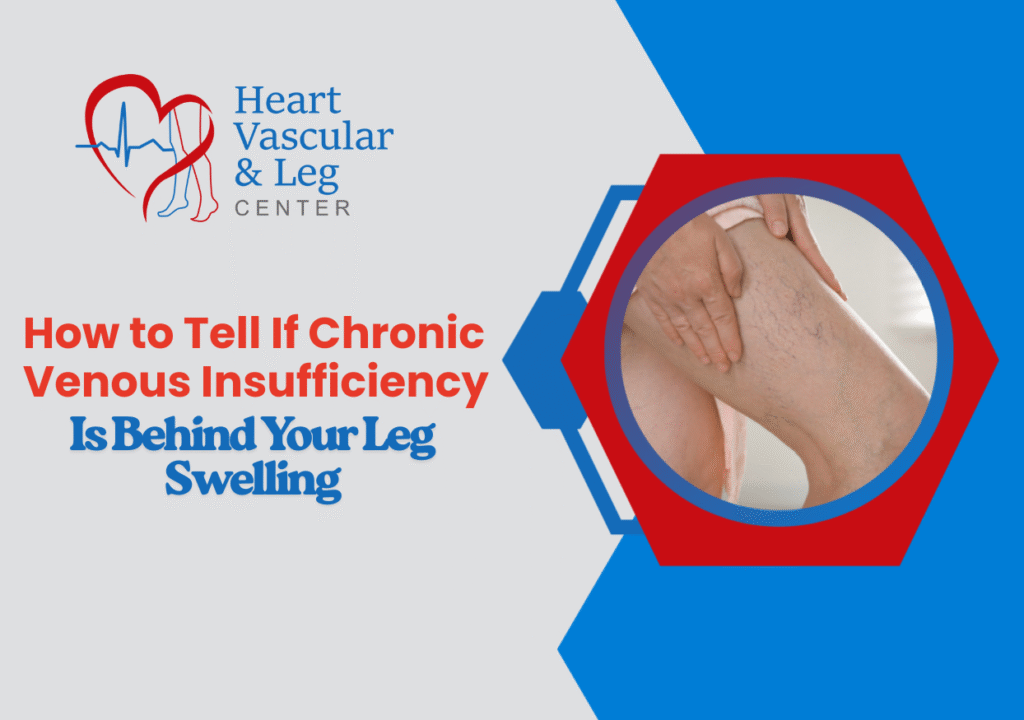
You got some swelling around your ankles, which you did not have this morning. You believe it is only because you are standing on your feet, but perhaps there is more to it.
Swollen legs occur in many people.
Although it may arise due to other causes, one of the primary causes is chronic venous insufficiency.
Once you know what to look for, treatment can help you feel much better.
Think of your leg veins like pipes that carry blood back to your heart. Inside these veins are tiny doors called valves. They open to let blood flow up and close to stop it from flowing back down.
In case of chronic venous insufficiency, these doors no longer close. The blood flows backward and stagnates in your legs.
CVI swelling has its own look and feel. Here’s what to watch for:
What you might notice:
When it happens:
CVI swelling has special traits that set it apart. When you press on the swollen spot, it leaves a dent that slowly fills back in. The swelling feels usually soft, not hard as in lymphedema.
CVI often starts in one leg or is worse on one side. This is different from heart problems, which usually make both legs swell the same amount.
Also, heart swelling is often present even in the morning, but CVI swelling builds up by the evening and is better when u wake up in the morning.
Some signs mean you should see a doctor soon:
Getting help early makes a big difference in how well treatment works.
We’ve been taking care of people in Kern County for over 20 years. Our team includes heart and vein doctors like Dr. Vinod Kumar, our Medical Director, who really cares about each patient.
We focus on treatments you can get right in our office. We use new technology to find and treat chronic venous insufficiency in our comfortable Bakersfield location.
Here’s what this means for you:
We know that vein problems affect your whole life, not just your legs. We listen to what’s bothering you and make a plan that works for how you live.
You do not need to experience sore and inflamed legs. If swelling, skin changes, or leg pain are making your days harder, it’s time to find out what’s going on and how to fix it.
At Heart Vascular and Leg Center, we give you the care you need with kindness. Our treatments have helped thousands of people feel comfortable and move better.
Contact Heart Vascular and Leg Center today to set up your visit at our Bakersfield office on Commerce Drive. Your legs deserve good care, and so do you.
Can chronic venous insufficiency cause leg swelling?
Yes, it’s one of the main reasons legs swell. When the doors in your leg veins don’t close properly, blood sits in your legs and causes swelling.
What do your legs look like with venous insufficiency?
You’ll see swelling around your ankles, brown or red spots on your skin, small purple veins, and skin that looks shiny.
How to tell the difference between lymphedema and venous insufficiency edema?
Venous swelling is soft and leaves a dent when you press it. Lymphedema feels harder. Venous swelling usually starts at the ankle, while lymphedema often affects the whole leg including toes.
© Copyright 2024 Vascular Health Partners LLC. All Rights Reserved
Designed By CyberWorx